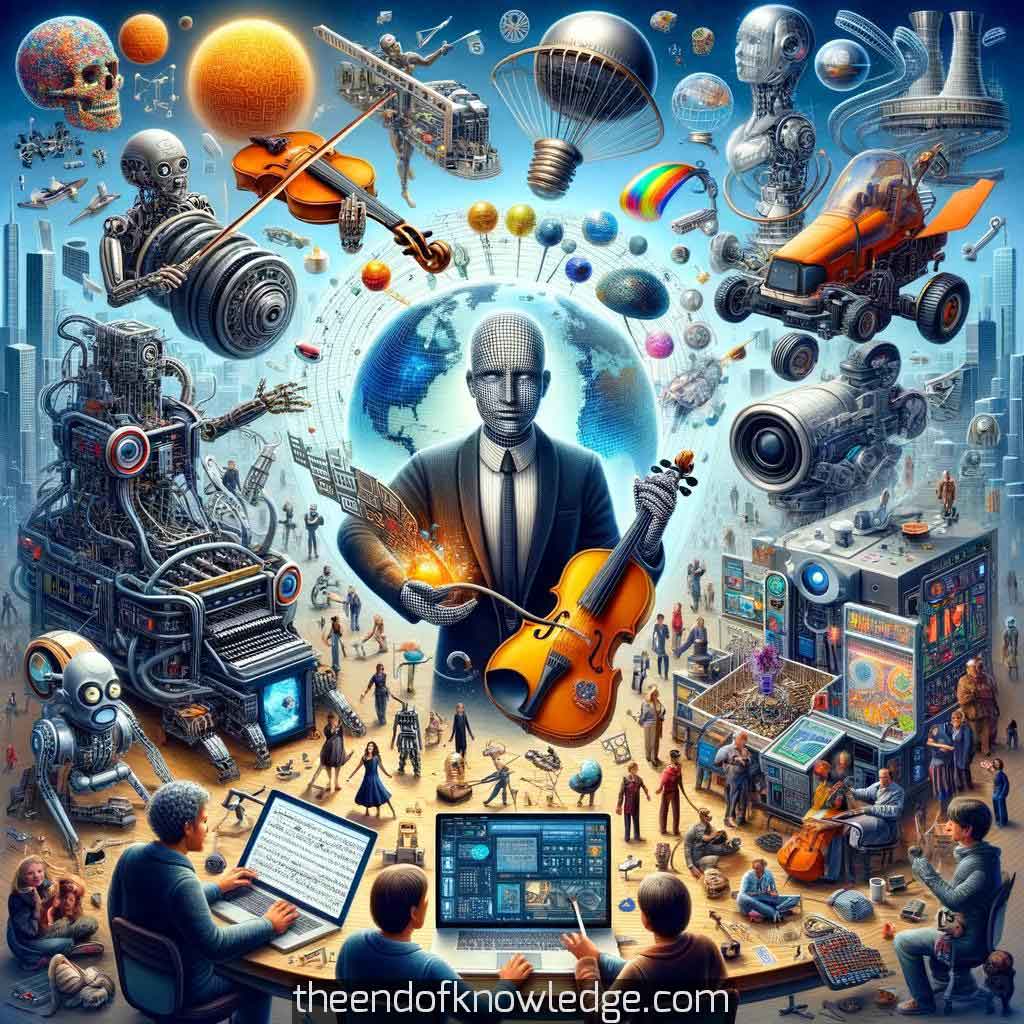 >
>
Concept Graph (using Gemini Ultra + Claude3):
Custom ChatGPT resume of the OpenAI Whisper transcription:
1.- Neil Gershenfeld, the director of MIT's Center for Bits and Atoms, discusses breaking down barriers between digital and physical worlds, contributing to fabricating objects and machines at varying scales, including robots capable of self-assembly and replication.
2.- Gershenfeld's work centers around the intersection of digital and physical realms. He delves into understanding and solving significant global problems, learning from the mistakes of pioneers like Turing and von Neumann.
3.- He highlights a fundamental error in computer science stemming from Turing’s machine model, where the head is separate from the tape, leading to an unrealistic separation of information storage and interaction.
4.- Von Neumann's memo on the EDVAC, which shaped modern computing, is criticized for its flaws. Gershenfeld argues that it overlooks the physicality of computing, leading to inefficient computing systems.
5.- Gershenfeld emphasizes the physical reality of computing, contrasting it with the fictional models in computer science. He advocates for a unified approach, integrating storage, processing, and interaction in computing.
6.- He discusses his journey from being discouraged from vocational school to his eventual role at MIT, criticizing the historical divide between liberal and illiberal arts that undermines the importance of fabrication and physical creation.
7.- Gershenfeld highlights the expressive power of modern technologies like micromachining and embedded coding, equating them to traditional forms of expression like painting or writing.
8.- His interest in the physics of musical instruments led to collaborations with musicians like Yo-Yo Ma, exploring the computational aspects of musical performance and instrument design.
9.- The conversation touches upon the origins of electronic music at Cornell, where pioneers like Bob Moog and David Borden contributed to the field, influenced by their backgrounds in physics and music.
10.- Gershenfeld discusses his early career decisions, including a pivot from IBM to MIT, motivated by the interdisciplinary nature and freedom offered at the latter.
11.- The establishment of the MIT Center for Bits and Atoms (CBA) is described, focusing on bridging various scientific disciplines and scales of fabrication, from nanostructures to large-scale constructions.
12.- The conversation shifts to the concept of digital materials, akin to Lego bricks, and their potential to revolutionize construction and fabrication at all scales.
13.- Gershenfeld discusses innovative projects in his lab, like creating ultra-light materials using carbon fiber and developing robots for assembling large structures.
14.- He explains the concept of self-replicating robots and their potential applications in areas like space construction, drawing parallels with biological processes like ribosomes making proteins.
15.- The interview delves into the concept of digital fabrication, moving beyond the traditional understanding of 3D printing to a future where digital descriptions become physical objects.
16.- Gershenfeld discusses the global network of Fab Labs, community spaces offering access to digital fabrication tools, and their impact on personal fabrication and creativity.
17.- He reflects on the transformative impact of enabling personal fabrication, providing examples of unique and meaningful projects created by students in his course at MIT.
18.- The conversation explores the potential societal impacts of digital fabrication, including addressing economic and social inequalities by enabling widespread access to fabrication tools.
19.- Gershenfeld touches on the implications of digital fabrication for sustainability, emphasizing the possibility of eliminating technological waste through the reuse of materials.
20.- He discusses the challenges and opportunities presented by the scaling of digital fabrication, including the potential for both benevolent and malevolent applications of the technology.
21.- The conversation turns to the future of digital fabrication, envisioning a world where machines can make machines, leading to a new era of manufacturing and construction.
22.- Gershenfeld explores the implications of self-replicating machines and assemblers, discussing how they could fundamentally change our approach to building and creating objects.
23.- He reflects on the limitations and challenges of current manufacturing and fabrication technologies, highlighting the need for new approaches to overcome these barriers.
24.- The interview touches on the ethical and security concerns associated with digital fabrication, particularly in the context of biotechnology and the potential for misuse.
25.- Gershenfeld discusses the intersection of artificial intelligence and digital fabrication, exploring how AI can aid in the design and assembly of complex systems.
26.- He highlights the importance of understanding the full spectrum of digital fabrication, from the creation of individual components to the assembly of complex structures.
27.- The conversation examines the historical evolution of digital fabrication, tracing its development from early computer-controlled milling to the present and future possibilities.
28.- Gershenfeld emphasizes the transformative potential of digital fabrication to enable new forms of creativity and expression, democratizing access to advanced manufacturing technologies.
29.- He reflects on the broader societal and economic impacts of digital fabrication, considering how it could reshape industries, economies, and communities around the world.
30.- The interview concludes with a discussion of the future possibilities and challenges of digital fabrication, envisioning a world where advanced manufacturing technologies are accessible and ubiquitous.
Interview byLex Fridman| Custom GPT and Knowledge Vault built byDavid Vivancos 2024